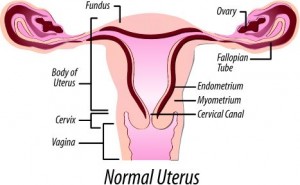Camille Grammer Talks to Dr. Oz about her Cancer Scare

Camille Grammer, 45, former member of the Real Housewives of Beverly Hills went on The Dr. Oz Show today to talk about her recent surgery for endometrial cancer. Grammer underwent a radical hysterectomy for early stage endometrial cancer four weeks ago.
Grammer explained that she has a family history of ovarian cancer in her mother. For that reason, she underwent genetic testing 6-7 years ago and found out that she had the same genetic mutation which predisposes her to cancer. She elected to be observed carefully rather than undergo an elective hysterectomy at that time.
Camille now says that she is cancer-free and:
“I’m feeling great…. Once in a while I’ll get a little pain here and there, but I’m walking around.”
If undergoing cancer surgery wasn’t enough, Camille also was the victim of domestic violence from her now ex-boyfriend Dimitri Charalambopoulos only 5 days after her surgery. she alleges that Charalambopoulos repeatedly struck her head into the furniture of their Houston hotel room. Pictures of Camille taken by the police show bruises on Grammer’s wrists, hair pulled from her head, and bruises on her face.
As she told Dr. Oz:
“Oh, it was just terrible ’cause, you know, right after any kind of procedure you want to be surrounded by love and you need good healing vibes and positive energy around you. Somebody’s there to take care of you and love you and – and I was physically abused and assaulted by this person and it was very traumatizing. But now, I’m working with a therapist and I’m going to be okay. I’m doing well.”
What is endometrial cancer?
 The uterus is a pear-shaped, hollow organ in the female pelvis which acts as the womb for a developing infant. The lower, narrow end of the uterus is the cervix, which leads to the vagina.
The uterus is a pear-shaped, hollow organ in the female pelvis which acts as the womb for a developing infant. The lower, narrow end of the uterus is the cervix, which leads to the vagina.
The uterus is made up of muscle, called the myometrium. Inside the myometrium, the uterus is lined by a vascular tissue called the endometrium. The endometrium varies in thickness under the influence of the female hormones estrogen and progesterone, and it is the endometrium that is sloughed and causes bleeding during a menstrual period.
Endometrial cancer is a cancer of the uterus which arises from the endometrial lining. A cancer that affects the myometrium is called a uterine sarcoma. Endometrial cancer is the most common cancer of the female reproductive system in the United States.
The American Cancer Society estimates for endometrial cancer in the United States for 2013 are:
- About 49,560 new cases of cancer of the body of the uterus (uterine corpus) will be diagnosed.
- About 8,190 women will die from cancers of the uterus.
- When all cases of endometrial cancer are looked at together, the 5-year relative survival rate is about 83%.
- Most of these cancers are found at an early stage, which has a 5-year survival rate of over 95%.
(These estimates include both endometrial cancers and uterine sarcomas. About 2% of uterine body cancers are sarcomas, so the actual numbers for endometrial cancer cases and deaths are slightly lower than these estimates.)
Endometrial cancer is rare in women under 40, with most cases occurring in women 50 and older. The average risk of a woman to get endometrial cancer over the course of her life is 1 in 40.
Symptoms of endometrial cancer include :
- Unusual vaginal discharge
- Pain in the pelvis
- Bleeding or discharge not related to menstruation (periods).
- Difficult or painful urination.
- Pain during sexual intercourse
- Pain in the pelvic area.
These symptoms are not specific to endometrial cancer, so your doctor should be consulted if these symptoms are present.
What is a radical hysterectomy?
Surgery (removing the cancer in an operation) is the most common treatment for endometrial cancer. The following surgical procedures may be used:
- Total hysterectomy: Surgery to remove the uterus, including the cervix. If the uterus and cervix are taken out through the vagina, the operation is called a vaginal hysterectomy. If the uterus and cervix are taken out through a large incision (cut) in the abdomen, the operation is called a total abdominal hysterectomy. If the uterus and cervix are taken out through a small incision (cut) in the abdomen using a laparoscope, the operation is called a total laparoscopic hysterectomy.
- Bilateral salpingo-oophorectomy: Surgery to remove both ovaries and both fallopian tubes.
- Radical hysterectomy: Surgery to remove the uterus, cervix, and part of the vagina. The ovaries, fallopian tubes, or nearby lymph nodes may also be removed.
For more information, click here to go to the Resounding Health Casebook on the topic.



























0 comments